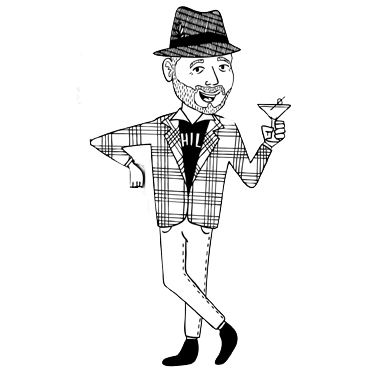 Due to numerous cancellations with the Phillies, holidays, etc, it has been hard to build enough consistency to really pull off a power rankings. We seem to finally be moving forward enough to get some rankings up (which will of course be derailed by the Christmas holiday, but such is life.) Here are our top ten heading into this week.
Due to numerous cancellations with the Phillies, holidays, etc, it has been hard to build enough consistency to really pull off a power rankings. We seem to finally be moving forward enough to get some rankings up (which will of course be derailed by the Christmas holiday, but such is life.) Here are our top ten heading into this week.
- Steak Em Up. (Bards) Controversy notwithstanding, the Steak Em Ups have proven unbeatable. That being said, they have agreed to split up the team somewhat starting this week.
- Ivan the Trivial. (O’Neals) Four straight wins at O’Neals. These guys are one away from having a bounty on their heads.
- L. Ron Hubbard’s Diabetics. (Ugly American) Winners of 8 of the last 9 at the Ugly American, I would really like to see them develop a rivalry with someone. Any good team that becomes regulars at the Ugly American will instantly be a viable rival, whether it be Duane’s World or the Ruptured Appendix.
- The Jams. (Locust Rendezvous) Two straight 2nd place finishes, but before that they had won 7 straight.
- Duane’s World. (Black Sheep) One first place and four 2nd places in the past 5 weeks. This team is starting to remind me of the Atlanta Braves of the 1990s.
- The Savage Ear. (O’Neals) Four straight 2nd places. This team is starting to remind me of he Buffalo Bills of the 1990s.
- Quiz on Your Face. (Rendezvous) Big win for the Faces this past week at the Rendezvous. Good to see that the Jams finally have a rival.
- 1022. (Rendezvous) These guys have been coming up big lately at the Vous as well. The addition of new team members has made this crew one to keep an eye on.
- Catdog. (Black Sheep)An impressive win this past week. This is a very streaky team. Will they get hot before the holidays?
- Why Can’t Us? (Ugly American) The only team to knock off the Diabetics in the past 3 months, this team is two players away from being a potent force. Time to hit the recruiting trail!
















